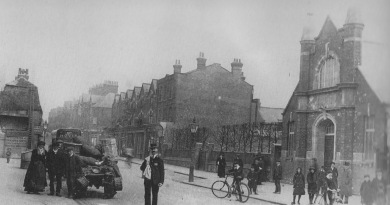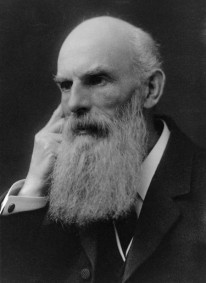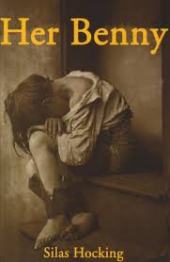The villagers of Crouch End have been quivering with expectation of late. Not at the arrival of a new multimillionaire burden on the civil list, but at the new cinema in Hornsey. Up to now, typing “N8” into Flickster or similar apps was a resentful act, with the knowledge that the results would show that the Muswell Hillbillies had an Odeon, Wood Green (the journey of last resort to Crouchenders) has two multiplexes, and poor old Hornsey has no silver screen at all.
Not for long. In conjunction with Curzon the new ArtHouse is set to pop its corn round these parts from the autumn.
The two-screen, 190-seater will inhabit a modestly lovely Edwardian building used as a music venue until earlier this year. It had previously served as a snooker hall, but was recently saved from repurposing as a lap-dance house only by vehement local protest from the curiously-named Lap Off!, and from Rokesly Junior and Infant Schools, opposite the putative flesh-pot.

Tottenham Lane – the Sally Army citadel is on the right. A postman is in the middle and a greengrocer’s truck on the left.
The name of Cornwall-born novelist, Methodist preacher and local resident Silas Kitto Hocking will remain inscribed in a foundation stone on the front of the new multimedia venue, to the left of the entrance. It is a relic of the building’s original role as a Salvation Army citadel in 1913. Although the hostel was damaged by bombing during World War II the Christian soldiers marched onward until 1976.
Though now forgotten, Hocking was one of Crouch End’s most celebrated twentieth century inhabitants, and can be found in the 1911 Census living at ‘Heatherlow,’ 10 Avenue Road. The large house still stands just up from the junction of Coolhurst Road and Crescent Road.
The size of his property is not the only measure of his success. When he died aged 85 in September 1935 the author left Esther, his widow, £18,836 – equivalent to three-quarters of a million pounds in today’s money – and it was said he earned four times that over the years from his wholesome hardbacks.
Hocking would surely not have enjoyed being attached with the lap-dancing lounge proposed for the building and repelled a few years ago. Shortly before his death he had suggested that:
“People are getting tired of so much sex and all of these unpleasant stories and they are asking more and more for good clean stories.”
His favourite example of the latter was JB Priestley’s ‘Good Companions.’
Neatly for ArtHouse, four of Hocking’s works were actually realised for the cinema, including his bestselling story of slum life in Liverpool, ‘Her Benny,’ in 1920. It was the second of his seventy books published. Hocking had sold the rights for £40 but was concerned how the big screen might treat his baby.
“I went to see it with some misgivings,” he revealed, “and came away delighted. The spirit of the story was caught and maintained throughout and I cannot speak too highly of those who played their parts in its production. Benny and Little Nell quite realised my ideal, and that is a great deal for an author to say.”
Crouchenders harbour few such worries about the longed-for trendy cinema. Let’s hope it too exceeds expectations.
UPDATE: The ArtHouse quickly became part of the Crouch End cultural landscape and has won several awards: locals love it.
Yet soon after it opened a vacant site just a few doors down (the shabby but sizeable old Surman Brothers building) was acquired by the empire-building PictureHouse chain. By accident or design this address – 165 Tottenham Lane – was the same as Crouch End’s last cinema, a purpose-built 600-seater also called the Picture House, which closed in 1940.
The new multiscreen venue, opening in a matter of days, will be larger and have more facilities than the ArtHouse, but many customers say they will retain their allegiance to the bijou curtain-raiser.
Can N8, a cinematic desert for 75 years, suddenly sustain two magic lantern venues? I reckon so. In the 1930s boom times, as the fascinating new project London’s Silent Cinemas reveals, there were five silver screens within the virtuous triangle of Hornsey, Muswell Hill and Crouch End.
Symbolically, the two venues will clash head-to-head over the new ‘Star Wars’ film, but both should come out of that as winners. Just a shame neither of our new cinemas is called the Empire.



Reblogged this on Gavin Black / Editor and commented:
A new cinema is rising in my hometown of Crouch End…